Tubular cast-ons create an edge that seems like there would be no cast-on edge. They are extremely stretchy and are frequently used for ribbed edges, making them useful for hats, gloves, mittens, socks and sweater cuffs that need a lot of elasticity. They are called “tubular” because the first few rows create a tube of knitting, with the knits and purls separated into front and back. This is accomplished by knitting every other stitch and slipping the ones in between. But let’s show you the provisional tubular Cast-On.
Some people recommend a size or two smaller than used for ribbing to keep the bottom from flaring out. But also make sure, that you don’t tighten it up so much that you compromise the elasticity. My preference is to use the same size needles is called for the ribbing.
As with all techniques, swatching will give you the answer.
This cast on is my favourite tubular cast on because I love the provisional base. I don’t like to pick up stitches (as in the Tubular Cast On) or do a yarn over (as in the Yarnover Tubular Cast On).
This cast on matches the Tubular Bind Off.
Materials needed: working yarn, needles in the same size as for ribbing and smooth waste yarn (thinner or in same yarn weight as the working yarn)
Provisional Tubular Cast On – foundation rows/ rounds
NOTE: This cast on makes an odd number of stitches. For an
For an even number, after step 1, skip to step 3 and then repeat steps 2 and 3 until desired stitches are cast on. Instead of working steps 6 and 7, work only step 6 a total of four times before beginning a regular rib stitch.
The cast on for the “k1, p1” and “k2, p2” ribbing is the same.
Step 1: Knot the working yarn and the waste yarn together in an overhand knot, leaving a 4″ (10cm) tail. Hold the knot and needle in your right hand, using your index finger to hold the knot against the needle. With your left hand, hold the yarn in slingshot position (as for long tail cast on), with waste yarn over your left thumb and the working yarn over your index finger.
Step 2: Reach under the waste yarn, over the top of working yarn under and in front of waste yarn.
Step 3: Reach over the top of waste yarn and scoop the working yarn forward (like doing a yarnover).
Step 4: Repeat steps 2 and 3 until you have cast on one fewer than the desired number of stitches. Work step 2 once more. You should have an odd number of stitches.
Step 5: Turn work and drop the waste yarn.
Now you start with the foundation rows. The knit stitch – as it presents – you knit. The purl stitch you slip purlwise with yarn in front. The next four foundation rows are worked as follows:
Step 6: For an even number of stitches, *slip 1 stitch purlwise with yarn in front, k1; repeat from * to the end. For an odd number of stitches, *slip 1 stitch purlwise with yarn in front, k1; repeat from * to one stitch, slip 1 stitch purlwise with yarn in front.
Step 7: For an even number of stitches, *slip 1 stitch purlwise with yarn in front, k1; repeat from * to the end. For an odd number of stitches, *k1, slip 1 stitch purlwise with yarn in front; repeat from * to one stitch, k1.
Step 8: Repeat steps 6 and 7 once more (a total of 4 rows worked).
Now, start with the preferred ribbing.
NOTE: If you want to work in the round, it’s easiest to join for working in the round after the foundation rows. And then grafting the stitches with the tail from the cast on together (you can easily hide the tail in the tube at the edge of the ribbing).
>>> For the adventurous knitter, I recommend joining for working in the round after step 6.
Step 7: *With yarn in front, slip 1 stitch purlwise, p1; repeat from * to the end.
Step 8: *K1, with yarn in front slip 1 stitch purlwise; repeat from * to the end.
Step 9: Repeat step 7 once more.
Proceed to the preferred ribbing.
TIP: With this cast-on the new row or round starts with a purl stitch. However, if the first stitch should be a knit stitch – as most patterns require – I put the beginning of the row / round one stitch to the left. Nobody notices and sees.
Cast on an even number of stitches. Work through the directions for the foundation rows/ rounds as described.
Begin working k1, p1 ribbing.
Cast on a multiple of 4 stitches. Work through the directions for the foundation rows/ rounds as described.
Then, on the next row or round, you switch stitches to get 2 knits and 2 purls next to each other, as follows:
Step 1: Work the first stitch as it presents (knit or purl).
Step 2: The next stitch is the opposite, so you switch it with the stitch that follows by slipping the next 2 stitches off the left-hand needle inserting the same needle tip into the first stitch, going in front of the second stitch. Put the second stitch back on the left-hand needle.
Step 3: Work the next stitch on the left-hand needle (it will be the same as the first stitch you worked – knit or purl).
Step 4: The next 3 stitches are in order, but you must switch stitches again. Continue across the row/ round, switching stitches every 4 stitches.
Next row/ round: Start working k2, p2 ribbing.
Pull waste yarn
After a few rows, pull waste yarn out of the beginning row. Untie the knot and pull the waste yarn through.
Finished!
What a nice edge, isn’t it?



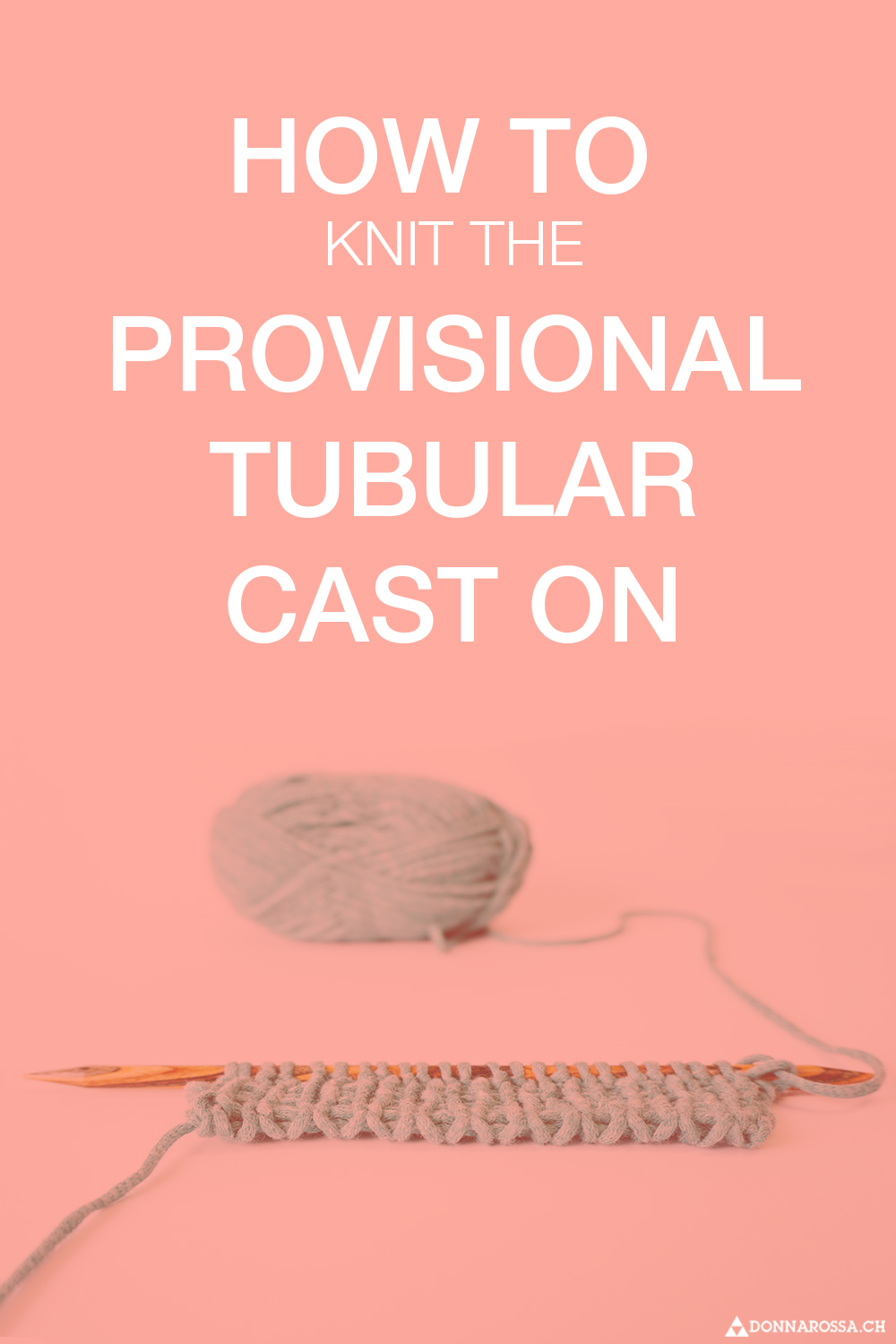
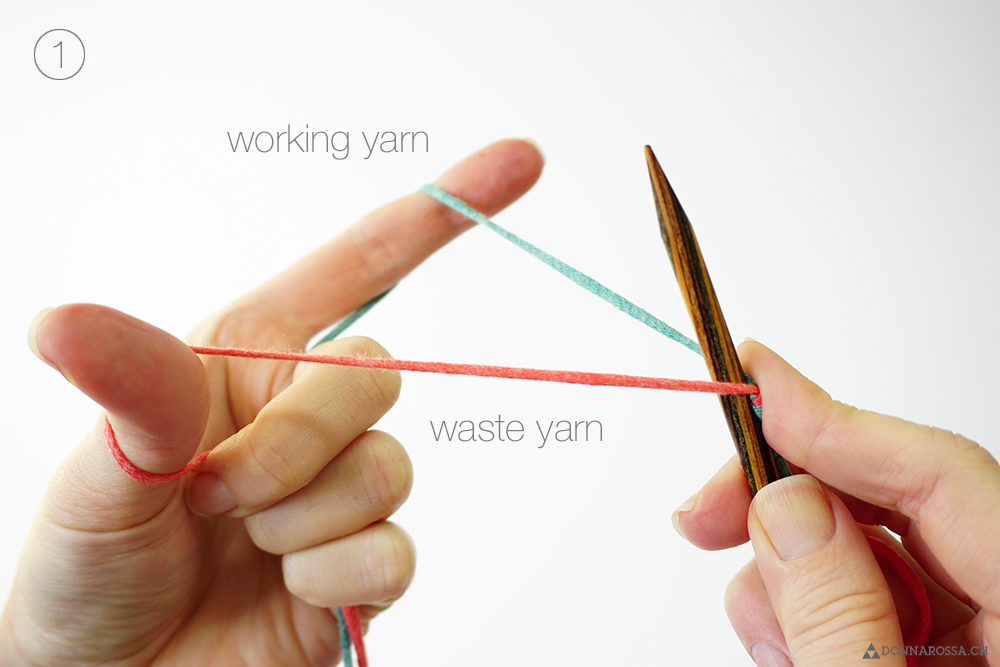
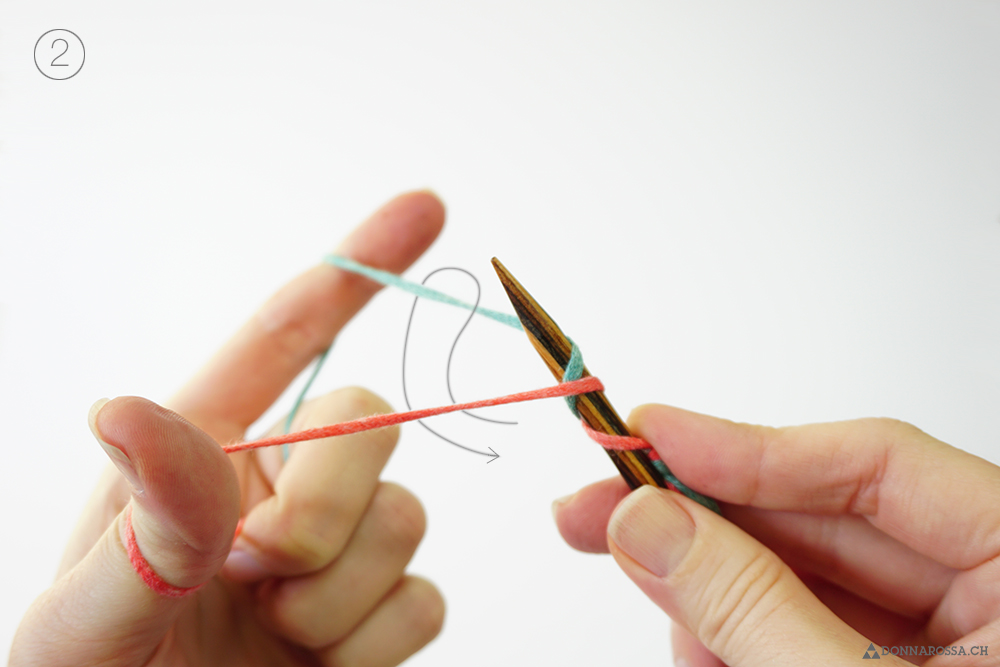
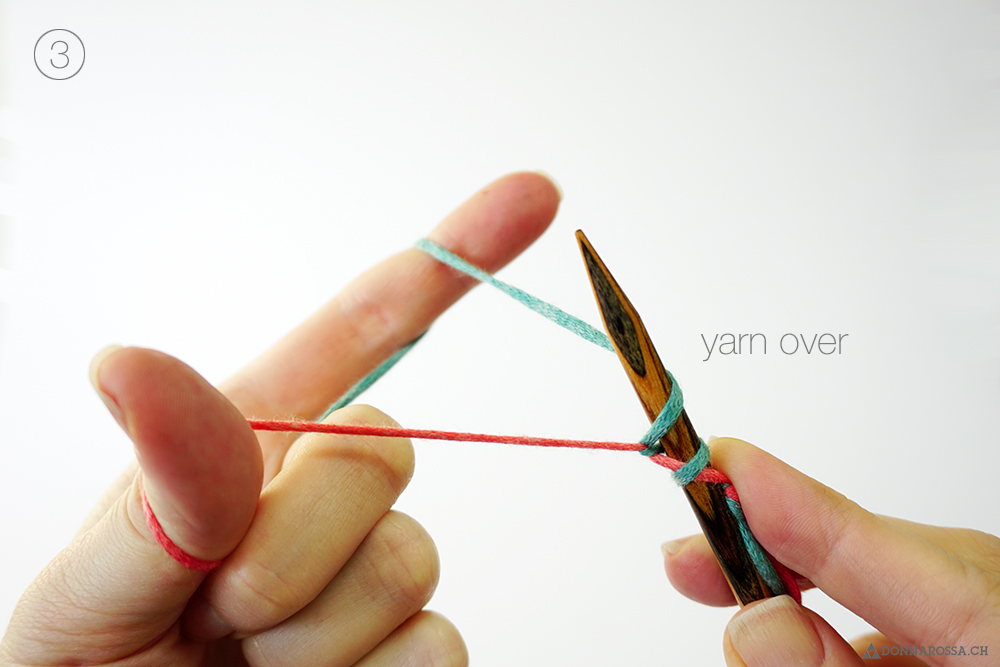

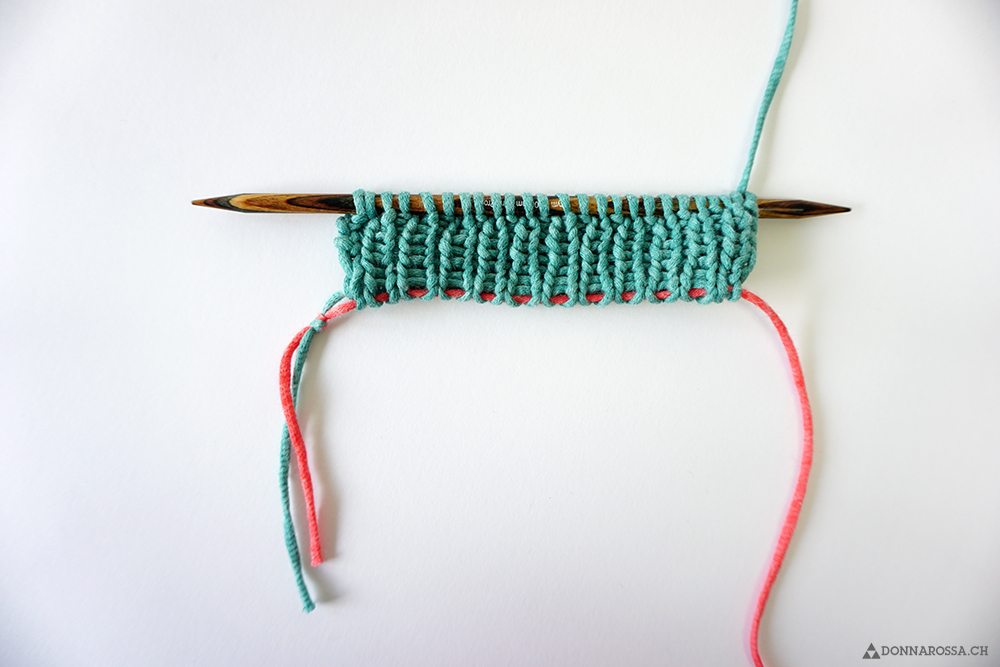
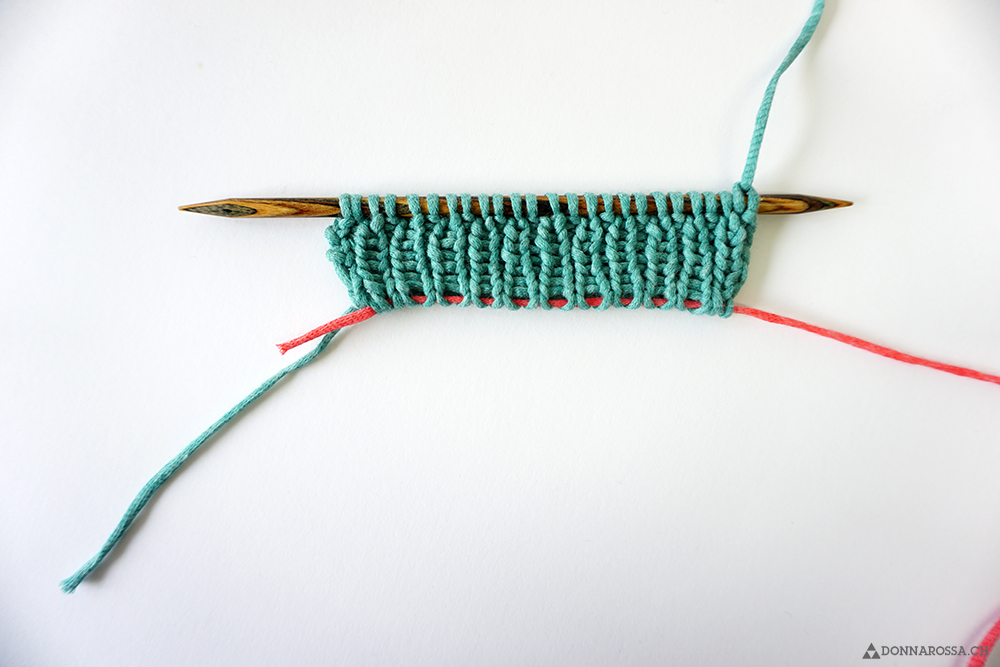

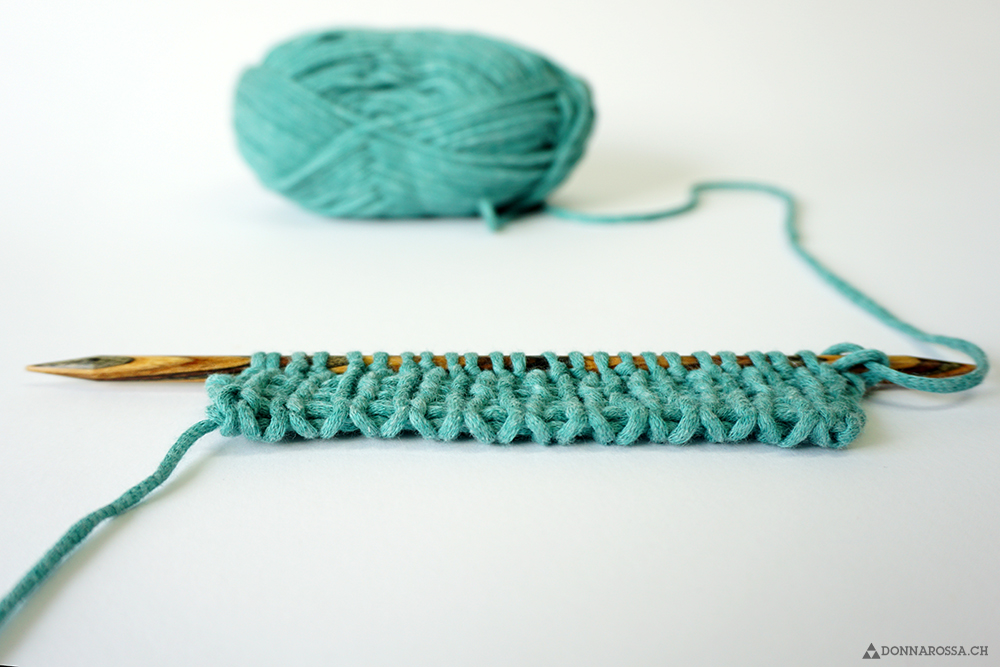

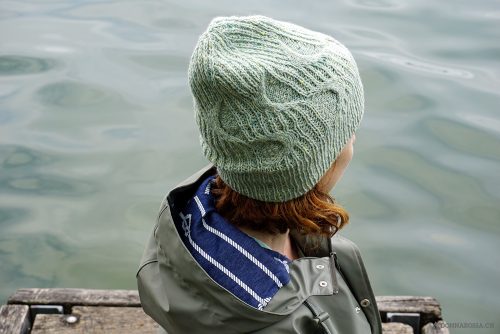
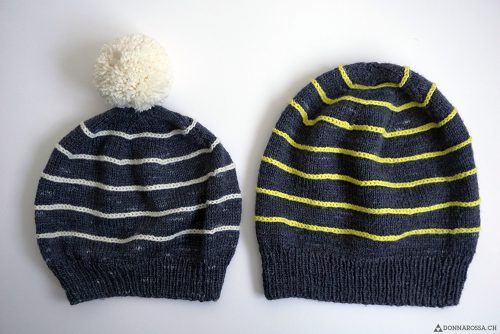
How to knit the Tubular Bind-off – DONNAROSSA
[…] tubular bind-off is identical to the tubular cast-on. The result is a very stretchy, elastic and smooth edge. This methode is used for finishing […]